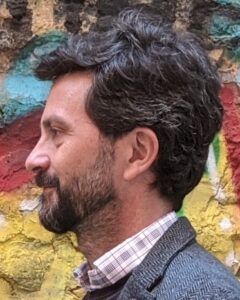
- This event has passed.
“High-field HTS stellarators with liquid metal walls”
April 1 @ 3:00 pm - 4:00 pm
Francesco Volpe
Founder, CEO, CTO
Abstract
French- and Swiss-based startup Renaissance Fusion strives to build a commercial nuclear fusion reactor by reinventing and synergistically combining three main technologies. The first one is the stellarator: more stable and steady state than a tokamak, but historically complicated to build. Renaissance dramatically simplifies its “coil winding surface”. The second technology is High Temperature Superconductors (HTS) generating strong magnetic fields that miniaturize the magnetic fusion device. HTS are scarce and expensive, typically produced in tapes, then stacked into cables and finally wound as 3D stellarator coils. Instead, Renaissance directly deposits HTS on piecewise cylindrical vacuum vessels or other large surfaces. Subsequent laser-engraving imposes specific current patterns, which generate specific 3D magnetic fields. This has several non-fusion applications: from magnet undulators for synchrotrons, to magnets for gyrotrons and magnetic resonance imaging, to energy storage. The third technology consists of liquid metal walls coating the inside of the fusion device and directly facing the plasma. Such walls, based on Li-LiH and 35 cm thick, will shield structural materials and delicate HTS from fusion neutrons, and will breed tritium. In addition, they will flow, to extract heat. Experimental results will be presented for a free-surface flow of GaInSn adhering to the interior of a cylindrical chamber by means of electromagnetic and centrifugal forces, without plasmas. Rescaled for density, the experiment was equivalent to levitating a 120 cm thick layer of Li-LiH. Next steps will be discussed, together with plans for their integration with the HTS technology and, ultimately, the construction of a net-heat, Q >1 stellarator and stellarator power-plant. Optimization results will be presented in the areas of plasma equilibrium, coil forces, economic power-plant sizing and neutron shielding. A remarkably simple Tritium extraction technique will be presented. Research needs, job openings and areas of possible collaboration will also be discussed.
Bio
Francesco Volpe is a fusion plasma physicist turned entrepreneur. He studied and conducted his research in Italy (Laurea 1998), Germany (PhD 2003), the UK and USA (post-docs ended in 2008). From 2009 to 2019 he held faculty appointments at the University of Wisconsin, Madison, and at Columbia University, in New York. Francesco conducted research on all four major magnetic confinement fusion concepts (tokamaks, spherical tokamaks, stellarators and reversed field pinches), making contributions to the physics of Electron Bernstein Waves, avoidance of tokamak disruptions, simplification of stellarators and control of liquid metal walls. He received the 2003 Otto Hahn Medal (thesis prize of the Max Planck Society), the 2011 DOE Early Career Award and the 2015 Excellence in Fusion Engineering Award by Fusion Power Associates. In 2019 he earned an Executive MBA at ESCP Europe and in 2020 he founded one of the first stellarator start-ups in the world: Renaissance Fusion.
Webinar ID: 932 8776 6557
4153 Etcheverry Hall, MC 1730 (map) University of California
Berkeley, California 94720
510-642-4077
510-642-5760


